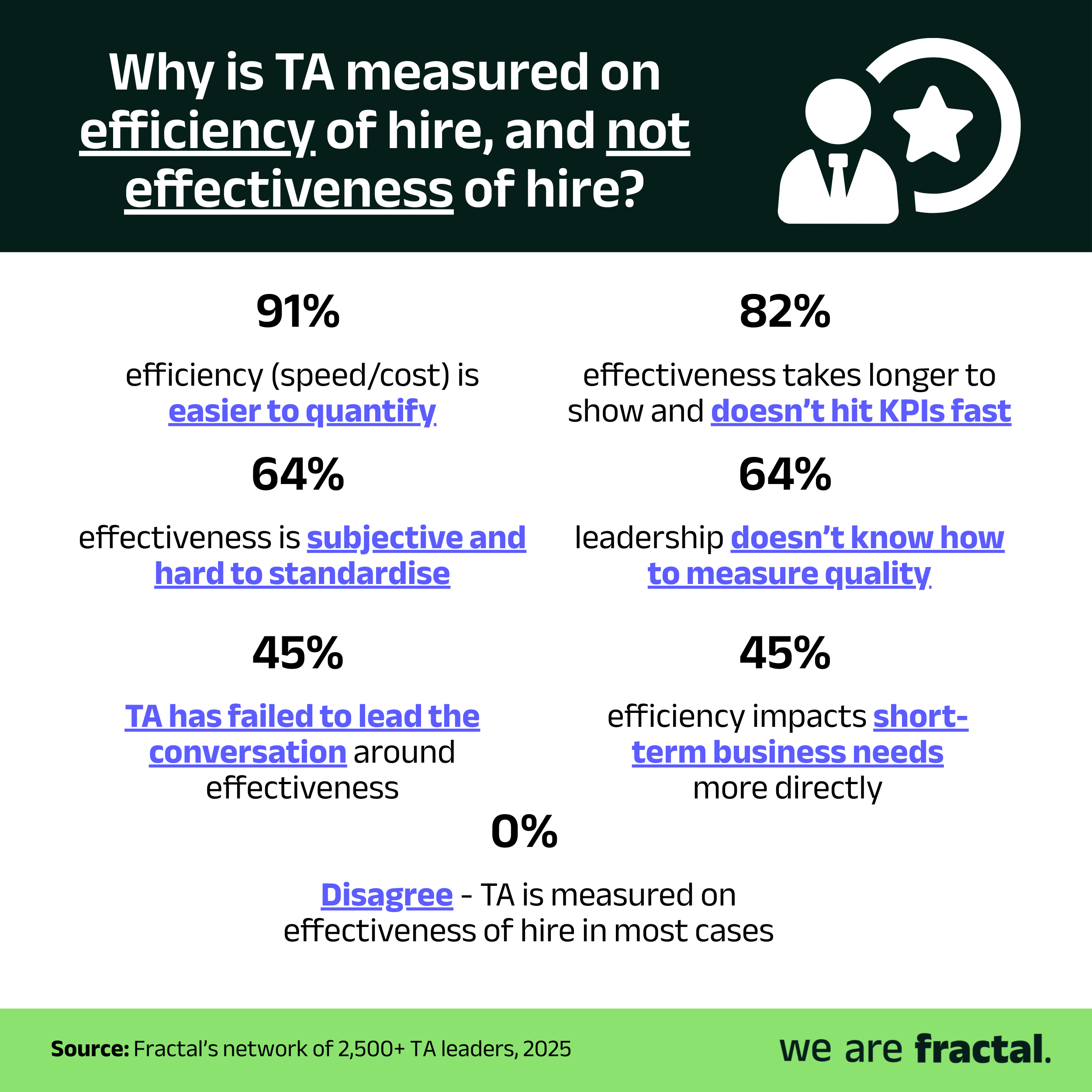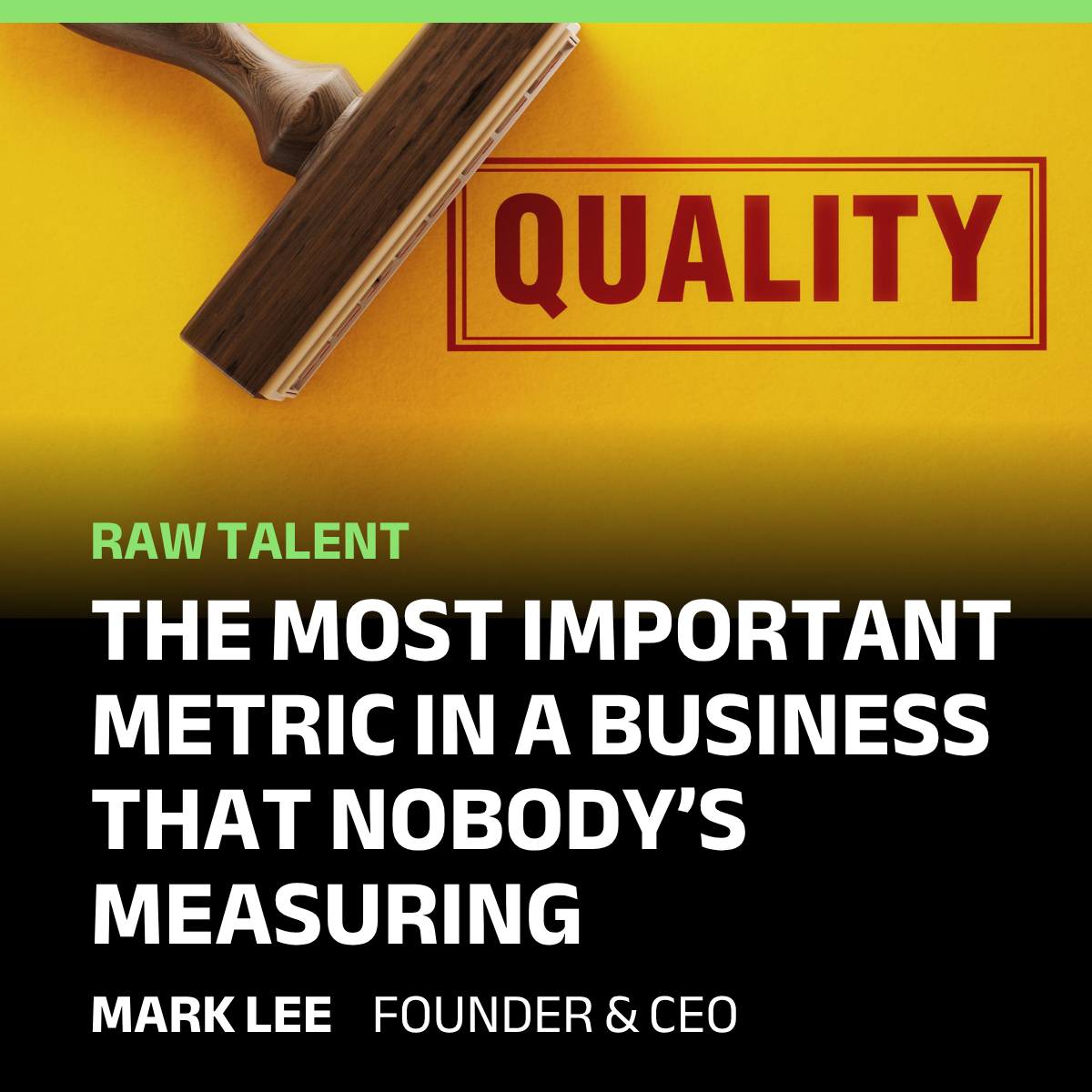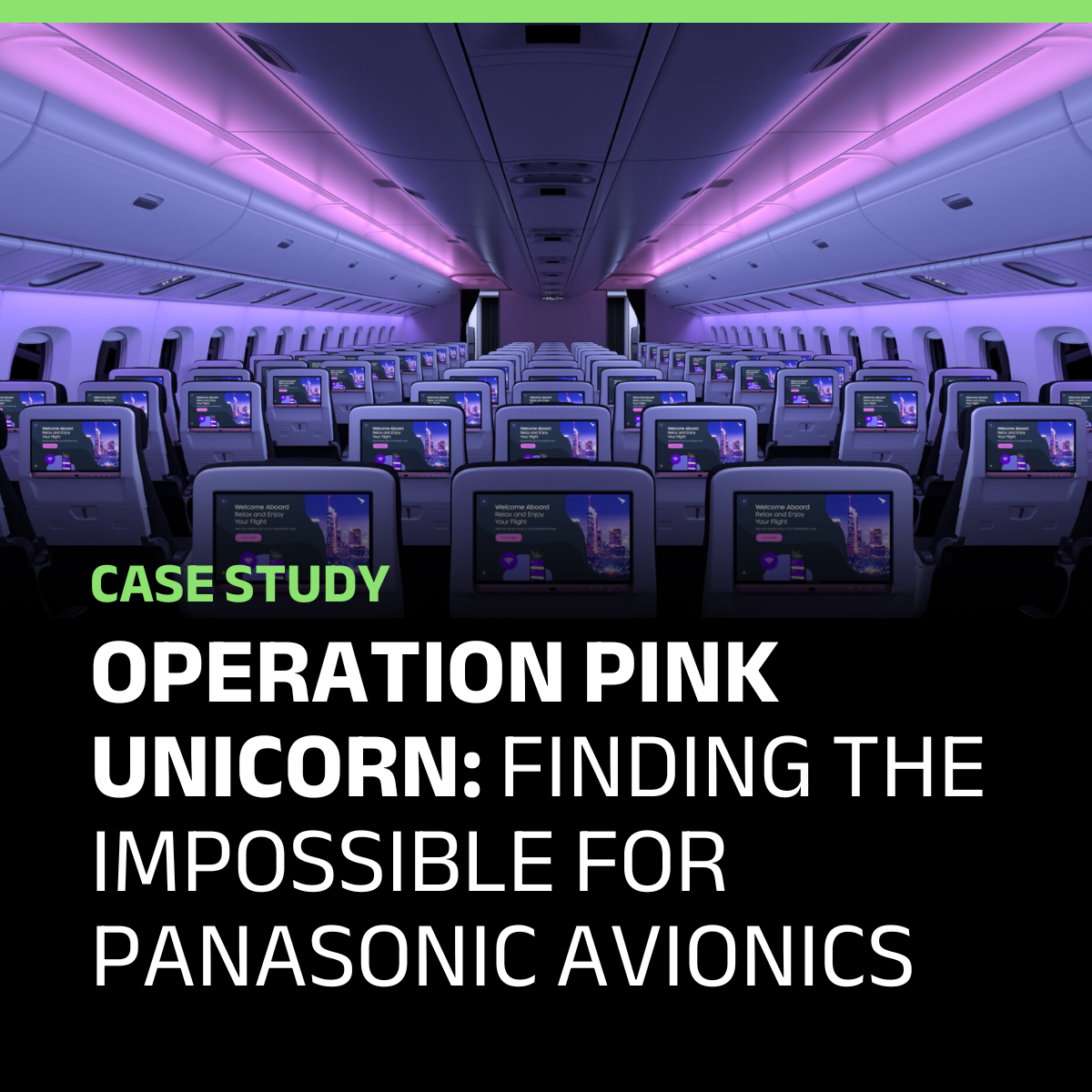Talent. It’s the fuel of any thriving enterprise. And who acquires this precious resource? The clue’s in the name…TA.
Talent. All businesses want to acquire:
- the best they can
- as quickly as possible
- as cost effectively as possible.
Ask any CEO and they’ll tell you they are the three driving priorities – in that order.
But there’s a problem. TA doesn’t measure itself on whether a business hires the best it can. It measures itself on:
- whether the business hires cheaply
- and quickly
- and at a “good enough to hit minimum benchmark” quality standard.
In that order.
If you asked most hiring managers and business leaders to make a choice – take…
- “acceptable, quick and cheap”,
or
- “20% better, slower and more expensive”,
…how do you think the survey would poll? It begs a question, why does no-one ask?
TA Leaders are themselves hiring managers. So if you’re a TA leader, how would you poll? Would you be willing to wait a little longer and pay a little more for measurably better talent?
Every time that question isn’t asked, the business makes a sacrifice it didn’t know it was making;
- 20% less roles filled because of lesser quality recruiters
- 20% less sales delivered because of lesser quality salespeople
- 20% worse product delivered because of lesser quality tech people
Why?
Why isn’t TA laser-focused on measuring quality of hire to give their business that choice?
Our network’s view
We asked our network of 2,500+ TA specialists across the globe for their views. Here’s what they told us:

The raw data paints a damning picture. Not a single respondent said that organisations measured effectiveness of hire in most cases. 82% told us that “effectiveness takes longer to show” and “doesn’t hit KPIs fast”. 64% said it was “subjective” and “hard to standardise”, and the same said “leadership doesn’t know how to measure quality”.
“TA often over-prioritises efficiency because it aligns with short-term business pressures and provides easily trackable metrics” said one respondent. Spot on…
What They Told Us
Here’s some more of what we heard from the community:
- “TA is often a “short sighted” transaction-based model of speed and “get someone in now” rather than the effectiveness or “right solution” mindset. It could take longer to find someone but they will add more value over the mid / long term.”
- “Talent Acquisition is often a reactive function with its focus on filling gaps quickly as its top priority. It’s rare, but companies that use Impact of Hire or similar holistic performance metrics for their hires see great benefit from it.”
- “This problem is driven mainly by the fact that people functions are viewed as a fixed cost and not a revenue-contributing department. If a people leader reported effectiveness to a CFO they would have to quantify their existence in P&L-appropriate terms. Which might be helpful if scary.”
Fractal’s View
Enough of describing the problem. Here’s Fractal’s view on how to start solving it:
- Add new core metrics – % probation success, revenue and profit per employee, and CPH as a % of executive hire CPH. Probation success is an obvious and easy quality measurement. As is revenue/profit per FTE (all employees, not just hired ones) which should increase in a well-run company. And CPH comparison is your point scoring metric. Executives have no problem signing big cheques for big hires because they intuitively link value to cost at that level. Remind them – constantly. They are imperfect but they are a start. And remember, when sales sell, they get the glory, even though the rest of the organisation contributed. Be better at selling your success even if it isn’t exclusively yours.
- De-emphasise TTH & CPH in your narrative. No-one really cares. And the AI tech coming for recruiter jobs will be orders of magnitude better than you at delivering efficiency. You need a new flag to pin on your mast.
- Open sourcing channels to deliberately spend more. You’ll never get more budget if you don’t force home a message. That you need more money to hire the best. You have to take a chance, stop looking “cheap first” and establish a link between better quality hires and more cost.
- Focus on revenue-generating hires – spend more money on sourcing for hiring revenue generators that improve top lines. An easy linking of “quality” to “cost of hire”. To all those who say “but my internal team can deliver that hire without going external” ask yourself a question – what award are you winning by doing that? How is that a strategic play to increase your budget? And if you don’t start being strategic and pushing up your budget, how long before AI starts taking chunks out of it you can’t manage?
- Put your best people here (into the revenue-generating hires) and sacrifice elsewhere. Think like salespeople do – the win is the only thing that matters
The scary thing for TA Leaders to contemplate is this. If Agentic AI delivers on its potential, there’ll be a lot less jobs and therefore a lot less hiring. And therefore a lot less TA leaders. Or put another way, a lot more choice when hiring a TA Leader. That’s a reality today, even without agentic AI adoption. So just measuring efficiency – something that tech delivers far better than humans – doesn’t feel like a smart move. If recruitment needs the human touch, arguably this should be used to achieve something complex like forecasting performance – not counting days on a calendar since the job opened…
Fractal can help. Help you understand the tech you’re going to require in an agentic AI scenario. Help you implement a quality-focused solution. Help you plug that into our global freelance recruiter network of niche specialists who prove that cost and value are directly correlated.
So get in touch.








0 Comments